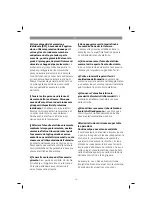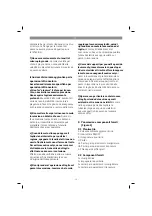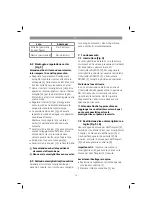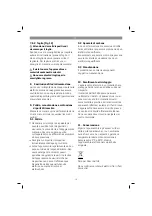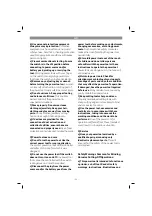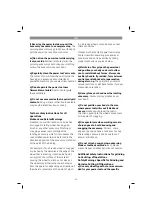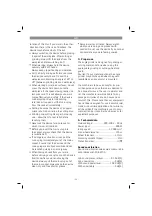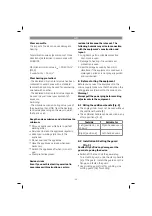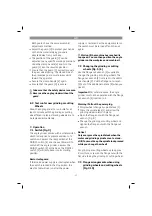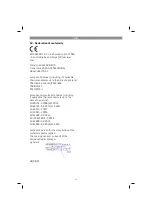
GB
- 23 -
Danger!
When using equipment, a few safety precau-
tions must be observed to avoid injuries and
damage. Please read the complete operating
manual with due care. Keep this manual in a
safe place, so that the information is avail-
able at all times. If you give the equipment
to any other person, give them these operat-
ing instructions as well. We accept no liability
for damage or accidents which arise due to
non-observance of these instructions and
the safety information.
1. Safety information
WARNING!
Read all safety warnings and all instruct-
ions.
Failure to follow the warnings and instruct-
ions may result in electric shock, fire and/or
serious injury.
Save all warnings and instructions for
future reference.
General Power Tool Safety Warnings
WARNING Read all safety warnings and
all instructions.
Failure to follow the
warnings and instructions may result in
electric shock, fire and/or serious injury.
Save all warnings and instructions for
future reference.
The term "power tool" in the warnings
refers to your mains-operated (corded)
power tool or battery-operated (cordless)
power tool.
1) Work area safety
a) Keep work area clean and well lit.
Cluttered or dark areas invite accidents.
b) Do not operate power tools in explosive
atmospheres, such as in the presence of
flammable liquids, gases or dust.
Power
tools create sparks which may ignite the
dust or fumes.
c) Keep children and bystanders away
while operating a power tool.
Distractions
can cause you to lose control.
2) Electrical safety
a) Power tool plugs must match the outlet.
Never modify the plug in any way. Do not
use any adapter plugs with earthed
(grounded) power tools.
Unmodified plugs
and matching outlets will reduce risk of
electric shock.
b) Avoid body contact with earthed or
grounded surfaces, such as pipes,
radiators, ranges and refrigerators.
There
is an increased risk of electric shock if your
body is earthed or grounded.
c) Do not expose power tools to rain or
wet conditions.
Water entering a power
tool will increase the risk of electric shock.
d) Do not abuse the cord. Never use the
cord for carrying, pulling or unplugging
the power tool. Keep cord away from heat,
oil, sharp edges or moving parts.
Damaged
or entangled cords increase the risk of
electric shock.
e) When operating a power tool outdoors,
use an extension cord suitable for outdoor
use.
Use of a cord suitable for outdoor use
reduces the risk of electric shock.
f) If operating a power tool in a damp
location is unavoidable, use a residual
current device (RCD) protected supply.
Use of an RCD reduces the risk of electric
shock.
3) Personal safety
a) Stay alert, watch what you are doing
and use common sense when operating a
power tool. Do not use a power tool while
you are tired or under the influence of
drugs, alcohol or medication.
A moment
of inattention while operating power tools
may result in serious personal injury.


